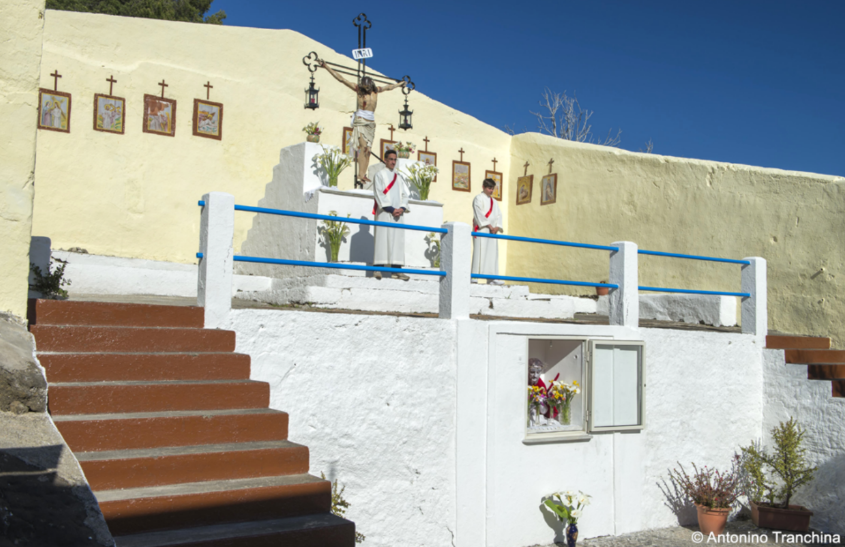Holy Week in Ustica
The Holy Week in Ustica begins on Thursday. In the evening, the community gathers in the church for the foot washing. Over the years, this moment has been marked by the dressing of twelve volunteers who represent the twelve apostles at the Last Supper. Each of these apostles is seated at a table set up in the main church, near the altar. In front of each one is placed a plate with a lettuce leaf, a piece of bread, and an orange. This form of celebrating Holy Thursday has varied over time, depending on the current parish priest’s influence.
On Holy Thursday, there are two key moments of the celebration. The first takes place in the morning, around 10:00 AM, with a short Via Crucis that culminates at the top of Calvary Hill. On one side of the main church, there is another open-air church, and the small procession follows a street called Via Calvario. At the top of this street stands the small open-air church, believed to be the first place of worship built on the island, established when settlers from the Aeolian Islands arrived during colonization.
Here, the idea of “familiarizing the place” emerges: the residents who live near this small church take care of preparing it for the Holy Week celebrations. In this symbolic Calvary—as interpreted in Ustica’s Holy Week narrative—Christ is crucified. Devotees who organize the celebration lift him and place him on a cross erected in the open-air space. At noon, the final station is recited, marking the death of Christ.
In the afternoon, a religious service is held in the main church. After the Mass, the evening procession begins, during which the heavy urn containing the dead Christ is carried through the streets. The procession follows a specific route through the town.
On Saturday, only a church service is held. Then, on Sunday, before the 11:00 AM Mass, the “Encounter” is enacted: the Sorrowful Virgin meets the Risen Christ, who has resurrected during the night. In this encounter, the Virgin removes her black veil. After this symbolic moment, a procession follows, tracing the same route as the Holy Friday evening procession.


